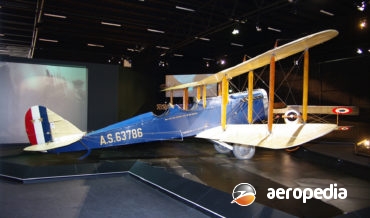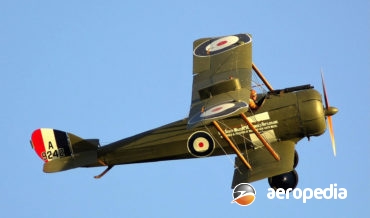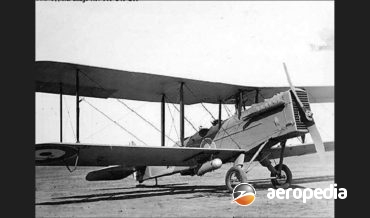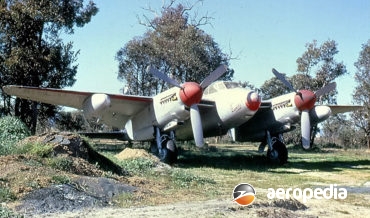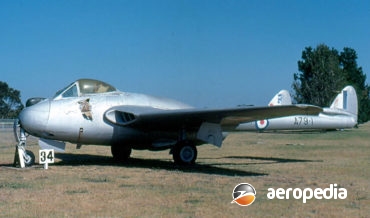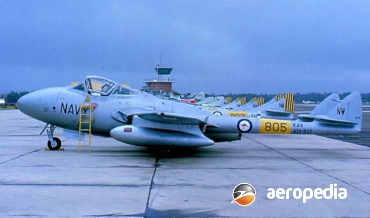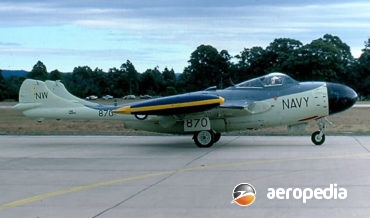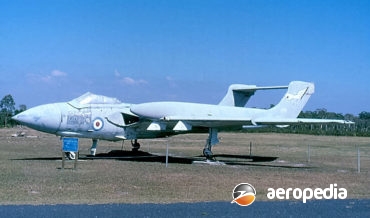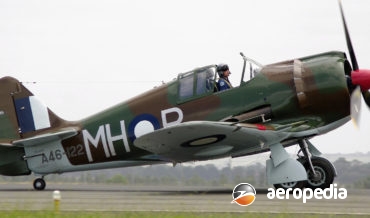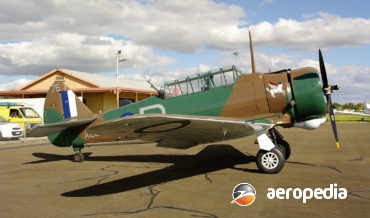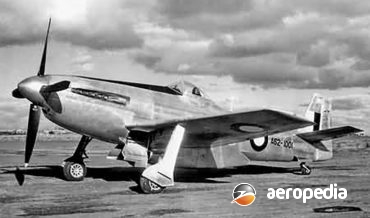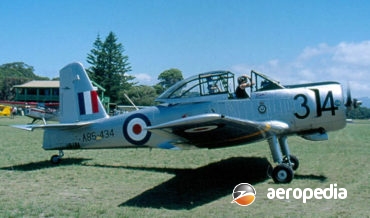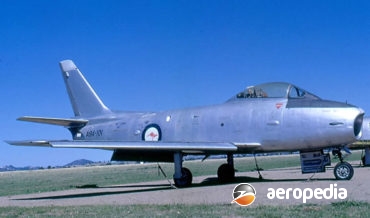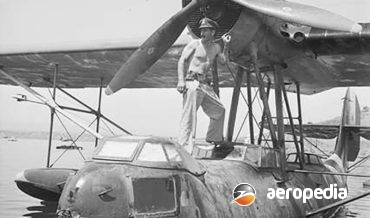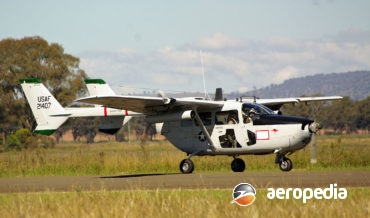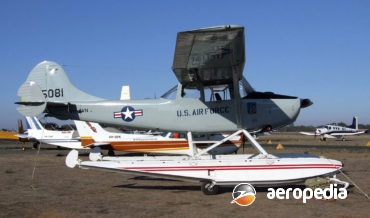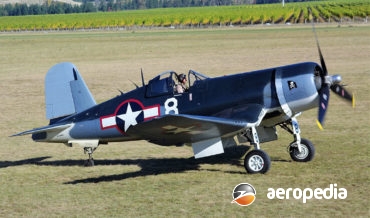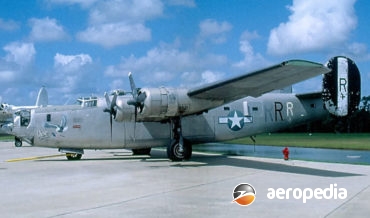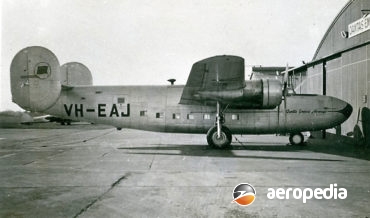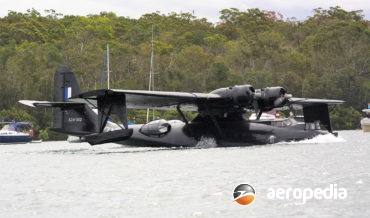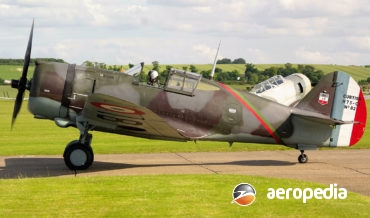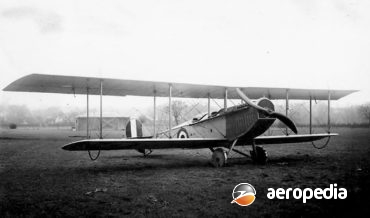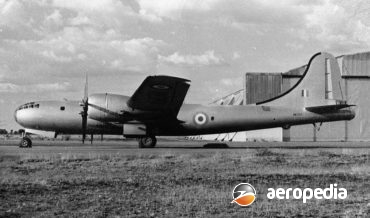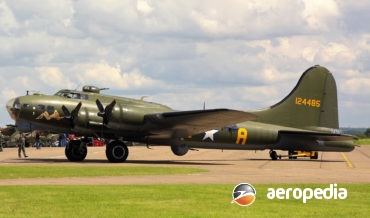David C. Eyre
The CW-21 series was designed and built by the Curtiss Wright Corporation at its St Louis Airplane Division in the 1930s, the first model in the series being the CW-19R, a two-seat general purpose training monoplane powered by a 336 kw (450-hp) Wright R-975-E3 Whirlwind engine.
David C. Eyre
- May 19, 2019
The DH.1 was, usually known as the Airco DH.1, was designed by Geoffrey de Havilland after he became the chief designer of The Aircraft Manufacturing Co (Airco). It was similar in appearance to the RAF FE.2, which he also previously designed, and was crewed by a pilot and an
David C. Eyre
- May 19, 2019
After working with the Royal Aircraft Factory for a period, in 1914 Geoffrey de Havilland moved to the Aircraft Manufacturing Co Ltd (AIRCO) and commenced to design aircraft
David C. Eyre
- May 19, 2019
The DH.4 was produced in prototype form by the Aircraft Manufacturing Co of Hendon in 1916, this aircraft (3696) making its first flight in mid August 1916 at Hendon, and was unusual in having dual controls.
David C. Eyre
- May 19, 2019
In June 1914 Geoffrey de Havilland moved from the Royal Aircraft Factory to the Aircraft Manufacturing Co Ltd (AIRCO) and commenced design of a series of reconnaissance and scout aircraft, the first becoming the Airco DH.1, followed by the DH.2. The Airco DH.5 was designed in 1916 as a
David C. Eyre
- May 19, 2019
In 1916 Captain Geoffrey de Havilland designed the DH.9 for Aircraft Manufacturing Ltd as a successor to the DH-4.
David C. Eyre
- May 19, 2019
In 1917 the Packard Motor Company in the US commenced to produce the 298 kw (400-hp) Liberty engine and the DH.9 airframe was modified to take the new engine, becoming thew DH.9A.
David C. Eyre
- May 19, 2019
The Mosquito was probably the most versatile aircraft of World War II, being used in all roles from fighter, night fighter, long-range bomber, pathfinder, to photo-reconnaissance etc.
David C. Eyre
- May 19, 2019
The DH.100 Vampire was built as a single-seat, jet-propelled, interceptor and the prototype (LZ548/G) was flown for the first time on 20 September 1943 powered by a de Havilland Goblin turbojet.
David C. Eyre
- May 19, 2019
Following the success of the Mosquito, de Havilland prepared a new design intended to be a long-range medium-altitude single-seat fighter which could also be used as an unarmed photo-reconnaissance aircraft, or as a fighter bomber.
David C. Eyre
- May 19, 2019
The prototype of the Venom series (VV612) was flown for the first time on 2 September 1949, and subsequently it was built in two main variants, the FB Mk 1 and the FB Mk 4, some 383 and 150 examples of each model respectively being built for the RAF.
David C. Eyre
- May 19, 2019
Designed as a private venture, the de Havilland Vampire two-seat trainer was a development of the Vampire single-seat fighter-bomber. Known as the DH-115 Vampire T.11, the first of two prototypes (G-5-7 – later WW456) was flown for the first time on 15 November 1950.
David C. Eyre
- May 19, 2019
Flight testing conducted in 1947 with a de Havilland Vampire powered by a Ghost engine in place of the Goblin led to design refinements by de Havilland.
David C. Eyre
- May 19, 2019
Originally designed as a land-based all-weather fighter for the RAF in competition with the Gloster Javelin, the Sea Vixen, or DH-110, was flown in prototype form (WG236) on 26 September 1951, a second aircraft (WG240) joining the test programme on 25 July 1952, both aircraft being built in the Experimental
David C. Eyre
- May 19, 2019
In the late 1930’s the RAAF was operating a small fleet of Supermarine Seagull V biplanes for reconnaissance, air-sea rescue, and general operations and was having problems keeping the aircraft airworthy. The wings were built of metal and with operations on salt water corrosion was causing problems.
David C. Eyre
- May 19, 2019
The suddenness of the Japanese onslaught at the beginning of the war in the Pacific, the speed at which Japanese forces moved, and the possibility of fighter aircraft not being available from overseas sources, led to the decision to design and build a fighter aircraft as soon as possible to
David C. Eyre
- May 19, 2019
The Wirraway (an aboriginal word meaning challenge) was a development of the North American NA-32 and NA-33 by the Commonwealth Aircraft Corporation. In January 1942, eight Wirraways engaged a force of more than 100 Japanese aircraft near Rabaul.
David C. Eyre
- May 19, 2019
The Wackett, named after its designer, Sir Lawrence Wackett, was developed by the Commonwealth Aircraft Corporation as an intermediate step between the elementary trainer, the de Havilland DH-82 Tiger Moth, and the more advance trainer, the CAC Wirraway.
David C. Eyre
- May 19, 2019
The CA-15 was the second single-seat fighter designed and built in Australia for service in the Pacific Theatre of Operations, the Boomerang being the first.
David C. Eyre
- May 19, 2019
The Winjeel (an Aboriginal word meaning young eagle) was designed to meet a 1948 specification for an aircraft to replace both the de Havilland Tiger Moth and the CAC Wirraway
David C. Eyre
- May 19, 2019
Considered to be the best of the numerous derivatives of the North American F-86F Sabre, the CA-27 Sabre had about 60-percent of its fuselage structure changed due to the installation of a Rolls Royce Avon turbojet in place of the General Electric J-47, the Rolls Royce engine requiring a greater
David C. Eyre
- May 19, 2019
In June 1940 the Australian War Cabinet voted money for the development of an aeroplane for the RAAF which was capable of dive-bombing, torpedo carrying, general bombing and reconnaissance duties.
David C. Eyre
- May 19, 2019
The licence-built Canadair Sabre was just one of a number of variants of the popular Sabre series.
David C. Eyre
- May 19, 2019
In 1931 the Italian Company Cantiere Novale Triestino (CANT) was reorganised as Cantieri dell’Adriadtico (CRDA) and Filippo Zappato returned from working in France to become Chief Engineer.
David C. Eyre
- May 19, 2019
In 1913 the brothers, Gaston and Rene Caudron, who lived in the Rue area of the Somme, designed and built a single-seat sesquiplane known as the Caudron G.II. Later in 1913 Lt Chanteloup looped a Caudron over Issy aerodrome near Paris.
David C. Eyre
- May 19, 2019
A military variants of the Cessna 337, the O-2 series was built in some numbers, 501 O-2As going to the USAF for Forward Air Control duties, and some 31 O-2Bs were used in the psychological warfare role in Vietnam.
David C. Eyre
- May 19, 2019
In 1950 the Cessna Aircraft Company of Wichita, Kansas, won a competition for the design of a liaison and observation monoplane for the US military services with the Model 305A, a development of the commercial Model 170 with similar wings, tail unit, and landing gear.
David C. Eyre
- May 19, 2019
Acknowledged to be the finest shipboard fighter of World War II, the Corsair was superior in many respects to the Mustang below 6,096 m (20,000 ft), and, although it was designed for shipboard operation, the type was probably operated more frequently from land bases during the war.
David C. Eyre
- May 19, 2019
Although not as famous as the Boeing B-17 Fortress, the Liberator was built in substantially greater numbers and operated on more operational fronts and in a greater variety of variants (15 major) than any other allied or enemy bomber.
David C. Eyre
- May 19, 2019
The requirement for a very long-range transport quickly became apparent early in world War II and , because of its roomy fuselage and good cruising speed, the B-24 series was a logical aircraft to develop to meet this requirement.
David C. Eyre
- May 19, 2019
The PBY Catalina was designed by Consolidated-Vultee Aircraft Corporation, which received an order from the US Navy on 28 October 1933 to build an experimental patrol aircraft designated XP3Y-1. The prototype (c/n 9459) flew for the first time on 21 March 1935 at Hampton Road, powered by two 615 kw
David C. Eyre
- May 19, 2019
In the 1920s Curtiss developed a series of biplane fighters, variants of which were built as civil aircraft, including the Conqueror Mailplane, D-12 Mailplane, and the Lindbergh Special built specially for Charles Lindberg.
David C. Eyre
- May 19, 2019
In 1934 Don R Berlin, chief engineer of the Curtiss Airplane Division of the Curtiss Wright Corp, designed an all metal low-wing cantilever monoplane with a retractable undercarriage.
David C. Eyre
- May 19, 2019
Designed for one of the founders of the American aviation industry, Glenn Hammond Curtiss, the Jenny was one of the great pilot training aircraft of the World War I period.
David C. Eyre
- May 19, 2019
In June 1955 the Bell Helicopter Company won a US Army contest to design a new utility helicopter.
David C. Eyre
- May 19, 2019
The Baffin was designed by Major F A Bumpus to meet a Royal Navy Fleet Air Arm requirement, and was built by the Blackburn Aircraft & Motor Co Ltd of Brough, in Yorkshire to succeed the company’s Ripon as the standard torpedo bomber with the FAA for operation from that
David C. Eyre
- May 19, 2019
Built in relatively small numbers, the Bv 141 reconnaissance aircraft was unusual in being of asymmetrical concept in that the pilot and crew were seated in a nacelle offset to starboard of a boom carrying the engine and tail assembly.
David C. Eyre
- May 19, 2019
The first aircraft to deliver a nuclear weapon in anger, the B-29 Superfortress has been credited by some with bringing the Pacific War to an end following the dropping of nuclear devices on the Japanese cities, Hiroshima and Nagasaki, these following the onslaught on Japanese cities in 1944 by USAF
David C. Eyre
- May 19, 2019
One of the most famous bombers of all time, the B-17 Fortress (Boeing Model 299) was built in large numbers at a number of plants for the USAAF and saw widespread service throughout World War II in all theatres of operation.
David C. Eyre
- May 19, 2019
Although flown for the first time in prototype YB-52 form on 15 April 1952, and entering service with the 93rd Bomb Wing of Strategic Air Command at Castle Air Force Base in California in June 1952, the B-52, albeit in much modified form, remains in service with the USAF, and
David C. Eyre
- May 19, 2019
Recent Comments
Archives
Categories
- No categories
Categories
- No categories
Latest Posts
Newsletter

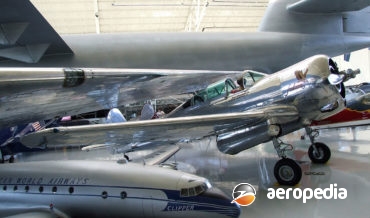
![DE HAVILLAND [AIRCO] DH.1](https://aeropedia.com.au/wp-content/uploads/2019/05/de-Havilland-Airco-DH.1-Aeropedia-The-Encyclopedia-of-Aircraft-Australia-New-Zealand-370x218.jpg?v=1593221059)

